Key takeaways:
- A diverse distribution strategy is essential for reaching a broader audience and achieving growth in independent publishing.
- Engaging directly with readers and understanding their preferences can uncover opportunities for new distribution channels and formats, such as audiobooks and subscription models.
- Collaboration with local artists and community-focused events enriches the reader experience and strengthens the distribution network.
- Measuring success through metrics and audience feedback is crucial for refining distribution strategies and ensuring impactful engagement with readers.
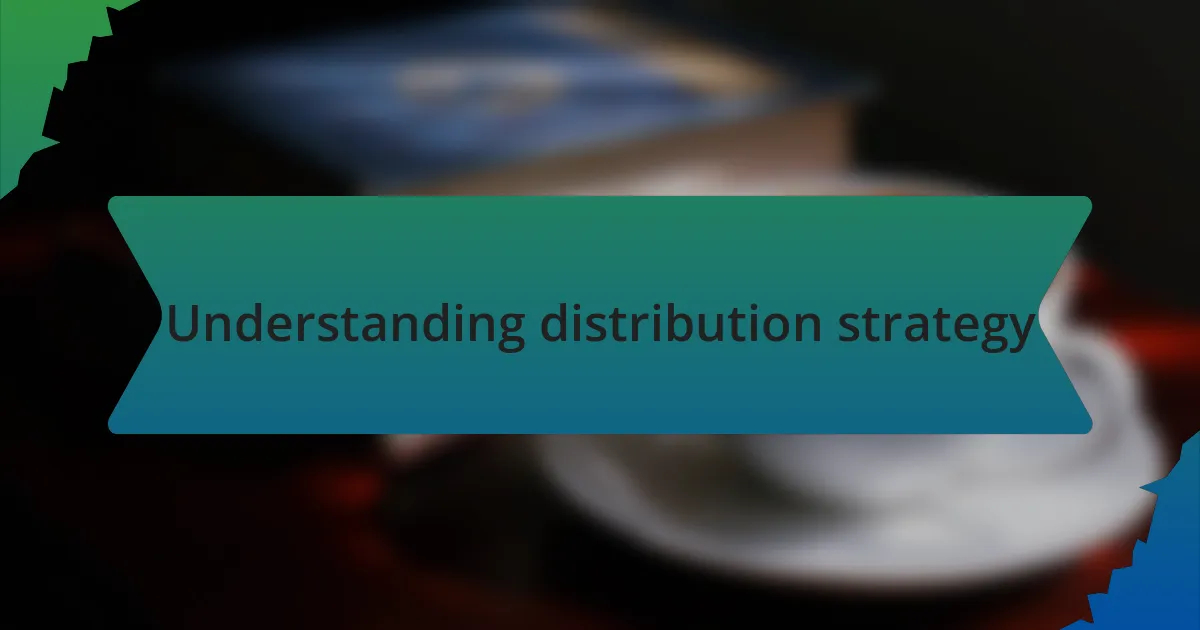
Understanding distribution strategy
A distribution strategy is essentially the plan for delivering your products to consumers, and it’s crucial for independent publishers like us who want to reach our audience effectively. I still vividly recall the moment I realized I wasn’t just selling books; I was also responsible for ensuring they reached the right readers. It made me question: How do I connect my work with those who need to see it?
When I first started exploring different channels, I experimented with various platforms, from online marketplaces to local bookstores. I remember feeling the thrill of my first partnership with a small literary café—they helped me understand the importance of a targeted approach. It’s not just about quantity; it’s about finding the right fit for your work.
As I refined my strategy, I learned that understanding my audience was key. What do they value? Where do they go for recommendations? This discovery transformed my approach, and it made me appreciate the power of tailored messaging. Engaging directly with readers not only strengthened my distribution strategy but also forged connections that went beyond mere sales.
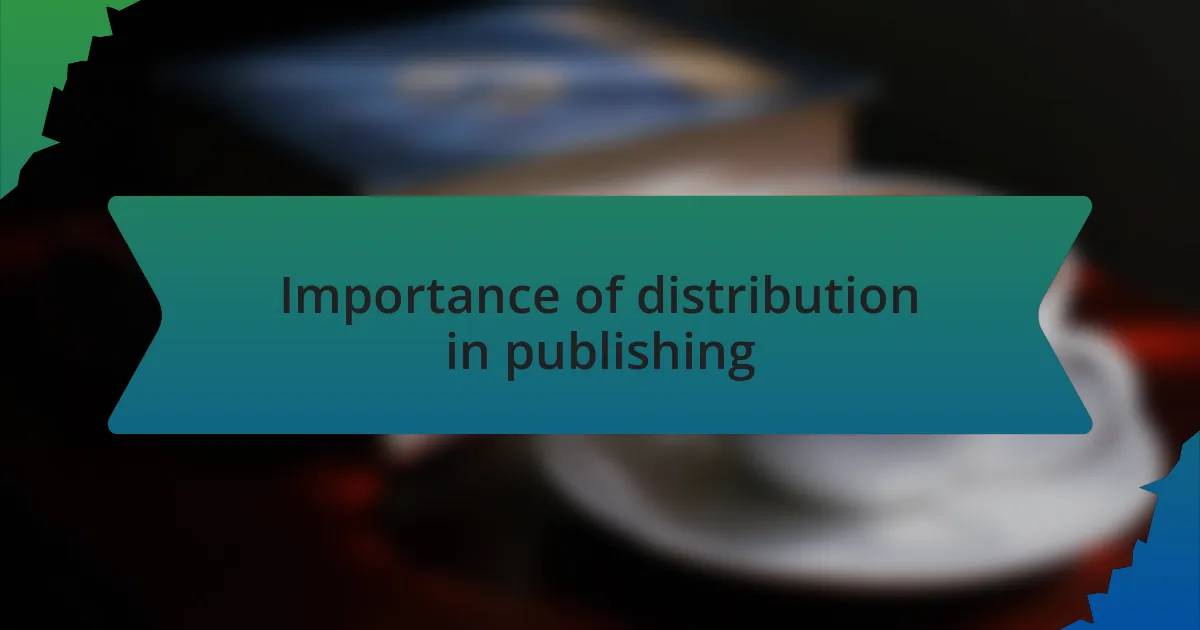
Importance of distribution in publishing
The significance of distribution in publishing can’t be overstated. I recall a time when my first self-published book was available only through a single online platform. While it made initial sales, I soon realized that limiting my distribution channels capped my potential reach. This experience taught me that a diverse distribution strategy is not just beneficial—it’s vital for growth and visibility in the crowded publishing landscape.
Navigating various platforms, I discovered unique communities eager for distinct voices. I could feel the excitement when I teamed up with local libraries for readings; it was there that enthusiastic conversations sparked interest in my work beyond the initial purchase. Distributing my books through these channels created a ripple effect. Why? Because readers who felt a connection to the author were more likely to share their experience with friends and family, effectively amplifying my reach through word-of-mouth.
Every interaction with a reader reminds me of the impact that thoughtful distribution can have. Have you ever had a moment when someone expressed how much a story resonated with them? Those moments reinforced my belief that distribution is more than logistics; it’s about building relationships. By connecting directly with my audience, I found not just customers, but advocates for my work, illustrating that distribution is the backbone of sustainable growth in independent publishing.
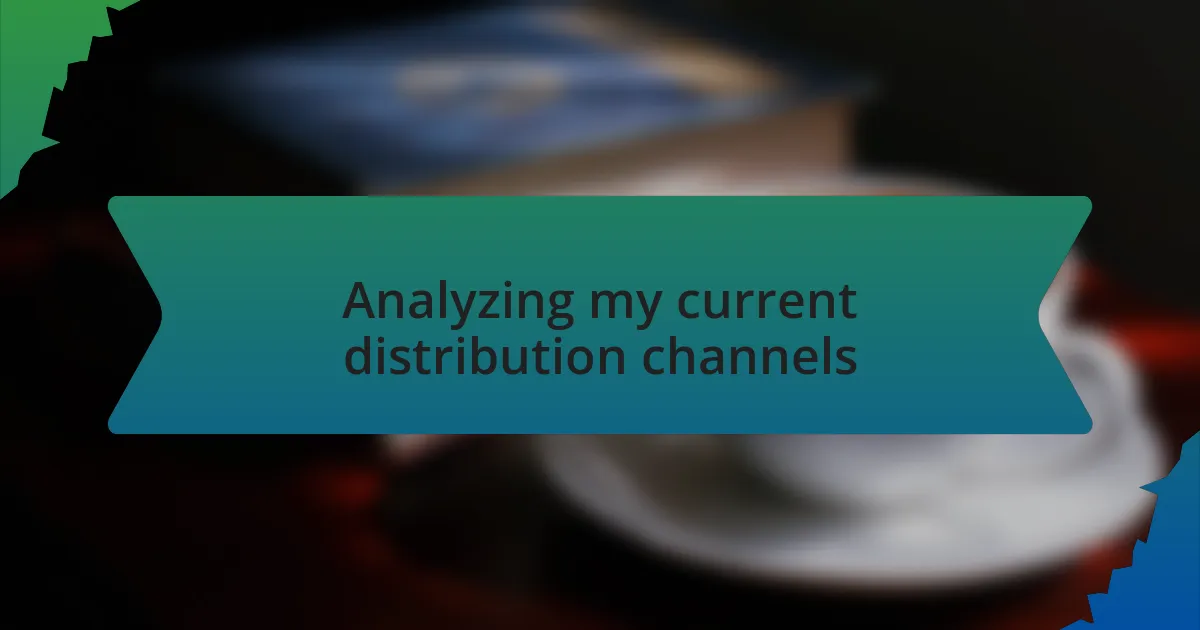
Analyzing my current distribution channels
Determining the effectiveness of my current distribution channels was a crucial step in optimizing my strategy. I remember sitting down with spreadsheets, examining where my sales were coming from. It was eye-opening to see which platforms attracted the most attention. Have you ever felt a jolt of realization when the numbers spoke louder than words? That moment pushed me to focus on enhancing those successful channels.
In addition to online sales, I explored niche markets, such as local bookstores and events. I vividly remember hosting a small book signing in my town. The intimate setting fostered genuine interactions, allowing readers to not only buy my book but also share their thoughts in real-time. That experience made me understand that optimizing distribution isn’t just about quantity but also the quality of connections forged through those interactions.
Analyzing my channels also led me to reconsider my marketing strategies. For instance, I found that email newsletters had the highest conversion rates compared to social media ads. It felt rewarding to realize this; I could engage my readers with personalized content rather than pouring time and resources into less effective methods. Have you ever thought about the impact of directly reaching out to your audience? I certainly did, and it reshaped my approach significantly.
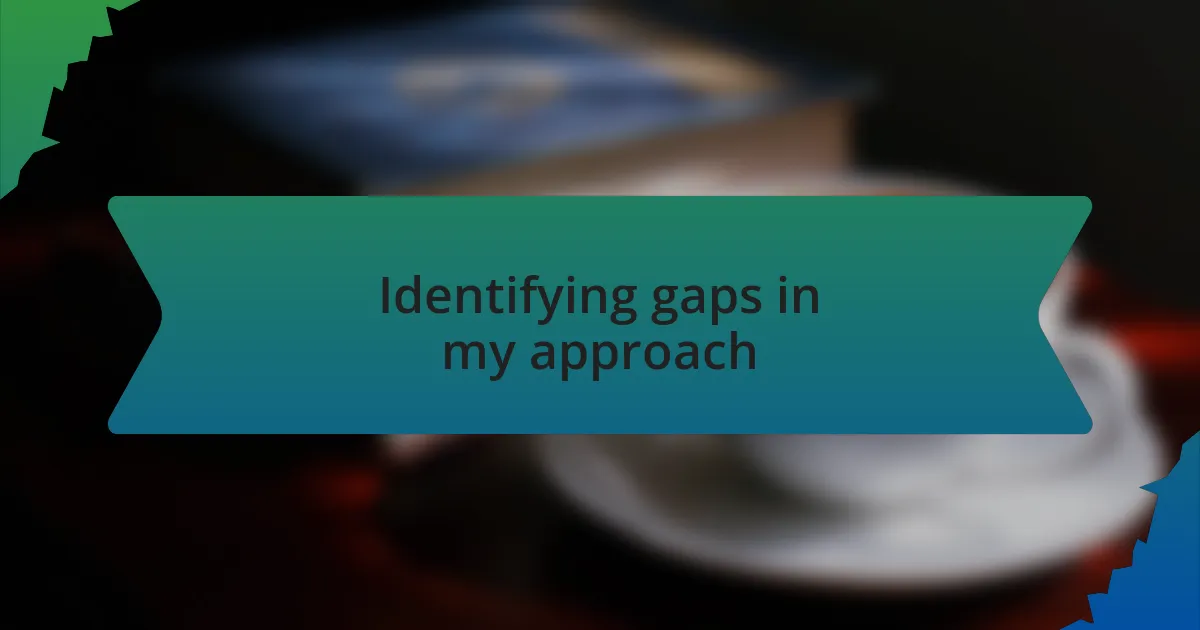
Identifying gaps in my approach
When I took a closer look at my distribution methods, I noticed some glaring gaps that I hadn’t considered before. For example, while I was focusing heavily on online sales, I was neglecting the potential of audiobooks, which is a growing format. This realization made me curious—how many readers were missing out on my work simply because I wasn’t catering to their preferred listening habits?
Part of identifying these gaps involved seeking feedback from readers. I remember sending out a survey to my audience, asking them about their preferred ways to consume literature. The responses were enlightening. Some readers expressed a desire for subscription models, while others wanted more community-focused events. Isn’t it fascinating how a little inquiry can unveil new opportunities? It made me realize that engaging with my audience could illuminate paths I hadn’t even considered before.
Moreover, I reflected on my approach to collaborations. I previously thought that partnerships were only about aligning with well-known influencers. However, after examining my audience’s interests, I found value in collaborating with local artists and other independent authors. This shift in perspective opened up new avenues for distribution while enriching the community experience around my work. Have you ever underestimated the power of local connections? I certainly had, but recognizing this gap truly transformed my strategy.
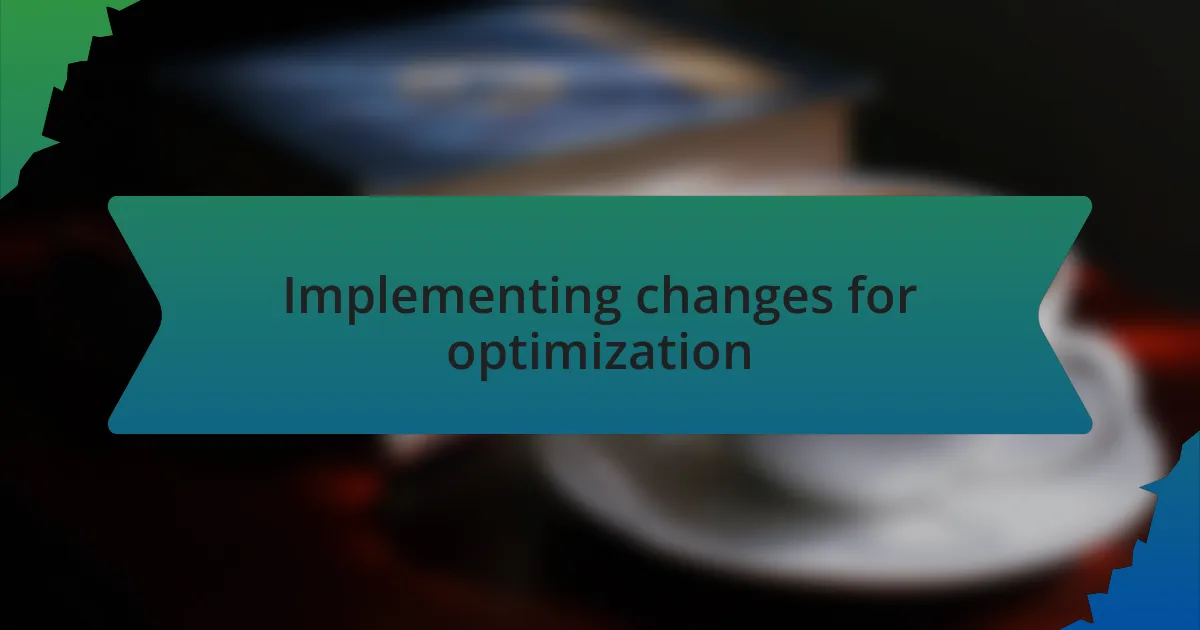
Implementing changes for optimization
Implementing changes for optimization required me to take decisive action on the insights I’d uncovered. For instance, after recognizing the potential of audiobooks, I invested time in learning about recording techniques and audio editing. The first time I listened to my own narration, I felt a mix of excitement and nervousness. Could my voice resonate with listeners the way I hoped? Taking that leap was both thrilling and daunting, but it ultimately helped diversify my audience.
I also began experimenting with subscription models. Initially, I was hesitant to shift from traditional sales to a recurring payment system. However, I decided to launch a small pilot program, offering exclusive content to subscribers. The response was overwhelmingly positive. I found immense satisfaction in knowing that my work was being valued in a new way. It’s interesting how sometimes, stepping out of our comfort zones reveals opportunities we never considered.
Finally, the changes I made in my collaborative approach transformed many aspects of my distribution strategy. I started hosting local meetups with fellow authors, which not only showcased our works but also fostered community engagement. I remember the first event, a cozy gathering in a small bookstore. The conversations flowed, and ideas sparked effortlessly among the attendees. Have you ever experienced the magic of collaboration? It made me realize that building relationships locally can create a powerful ripple effect in distribution.
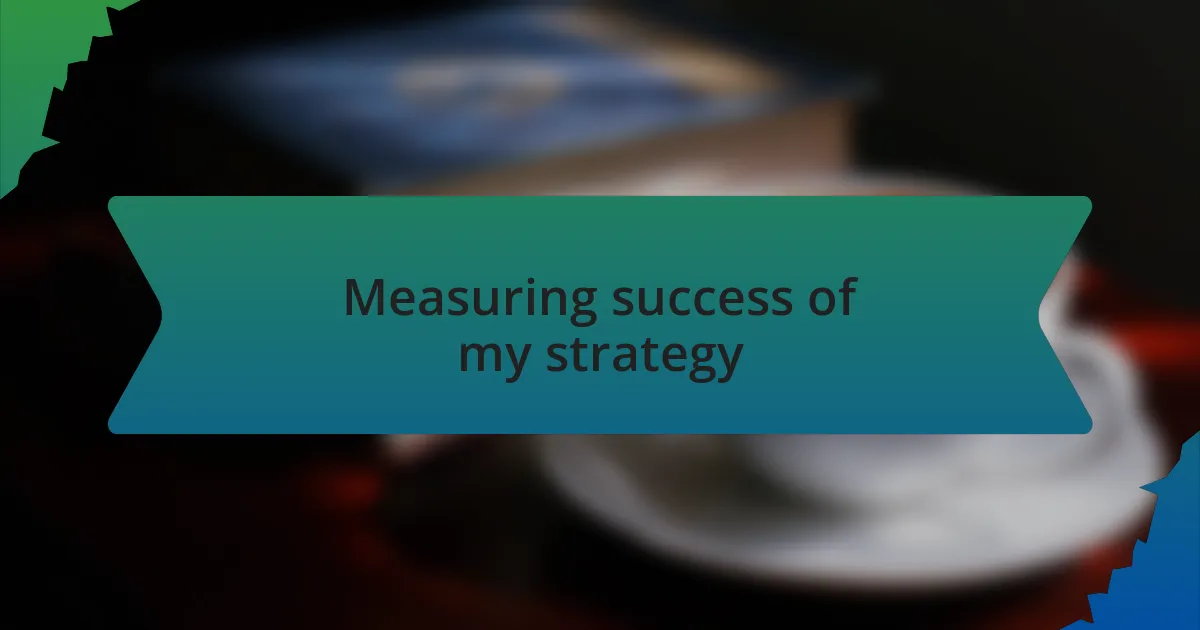
Measuring success of my strategy
Measuring the success of my distribution strategy became a pivotal aspect of my journey. One of the first indicators I noticed was the uptick in engagement across my platforms. By tracking metrics such as downloads, subscription rates, and even social media interactions, I could see the impact my changes had made. It felt rewarding to witness those numbers rise; it was as if each new listener was a personal victory.
Feedback also played a crucial role in assessing my progress. I began actively soliciting responses from my audience through surveys and discussions. One reader’s comment about how an audiobook helped them through their daily commute struck a chord with me. Those moments remind me of why I started this venture in the first place. What better way to gauge success than knowing your work is genuinely affecting lives?
Additionally, I compared my sales figures before and after implementing my strategy changes. Initially, I was anxious about this data—would it reflect my hard work, or would it fall flat? When I saw a significant increase in sales following the launch of my subscription model, I felt a wave of relief and validation. It’s these measurable outcomes that continuously drive me to refine my approach and keep pushing forward.